Pacific Bluefin Tuna
Species Description
Bluefin tuna are a majority dark blue or black, particularly on their topside with flecks of silvery-green. On their underside they have a light silver colour, dotted with grey flecks, which provides camouflage in the ocean when hunting for prey. Prey looking up below the tuna will not be able to distinguish the fish from the glare of the surface water. Likewise, prey from above will not be able to see the tuna as the dark blue colour on the fish blends in with the darkness from the deep. This is also known as countershading, and is seen across many marine animals.
Bluefin tuna are highly migratory, travelling across the Atlantic, Indian, and Pacific Oceans. Mature fish are, on average, 1.5 m (4 ft, 11 inches) long and 60kg (130lb), though some have been recorded to have reached 3 m (9.8 ft) in length and 450kg (990lb)!
Bluefin tuna can live up to 26 years, reaching sexual maturity at 5 years of age. Spawning takes place at different times of the year for schools across the world, and females can produce about 10 million eggs.
There are 3 species of bluefin tuna: Atlantic bluefin, Pacific bluefin and Southern bluefin tuna. They are among the larger bony fishes and eat squid and fish, including sardines, mackerel, and even other tunas. Despite having the smallest eyes across all tuna species, they have impeccable vision, hunting by sight.
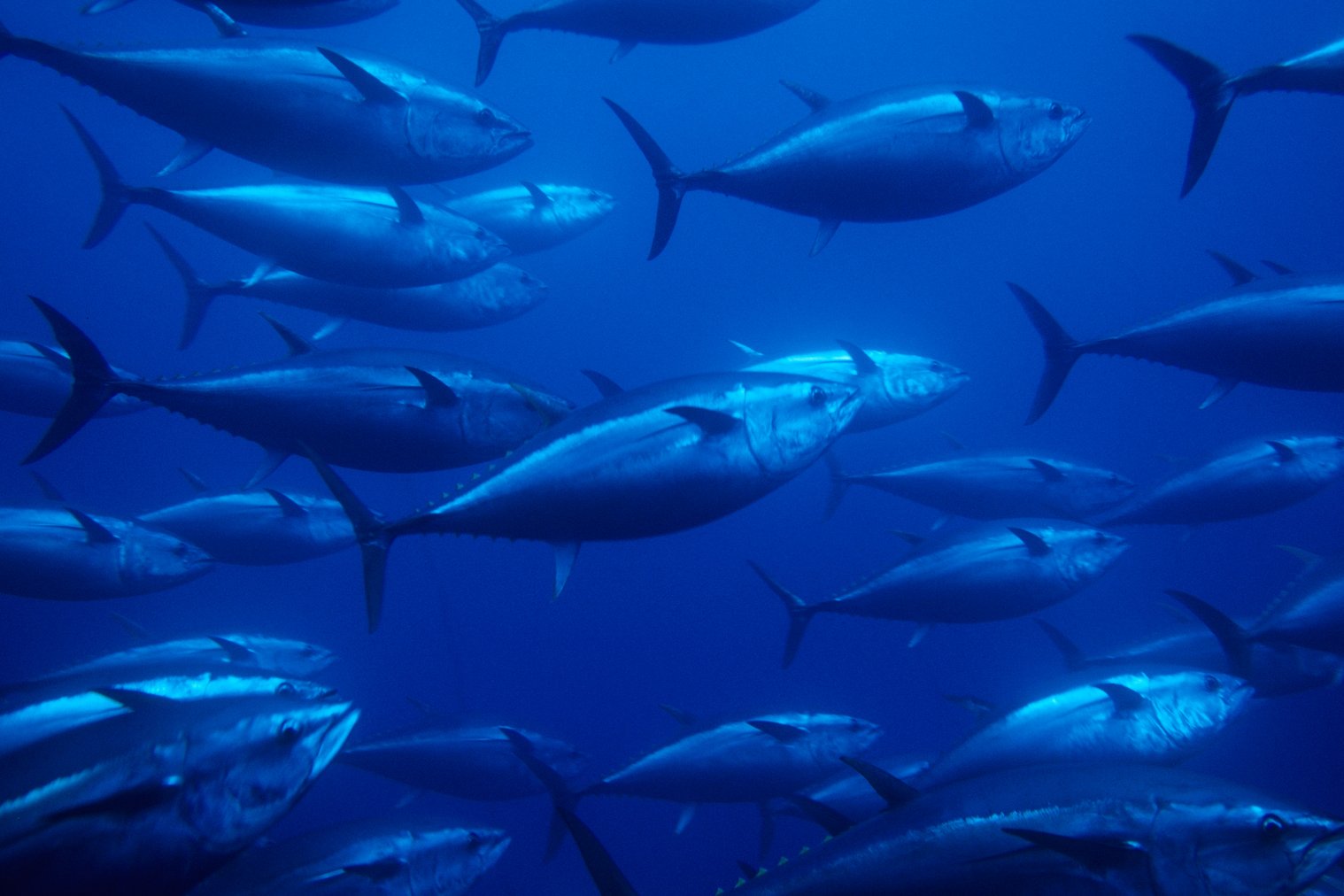
Gallery
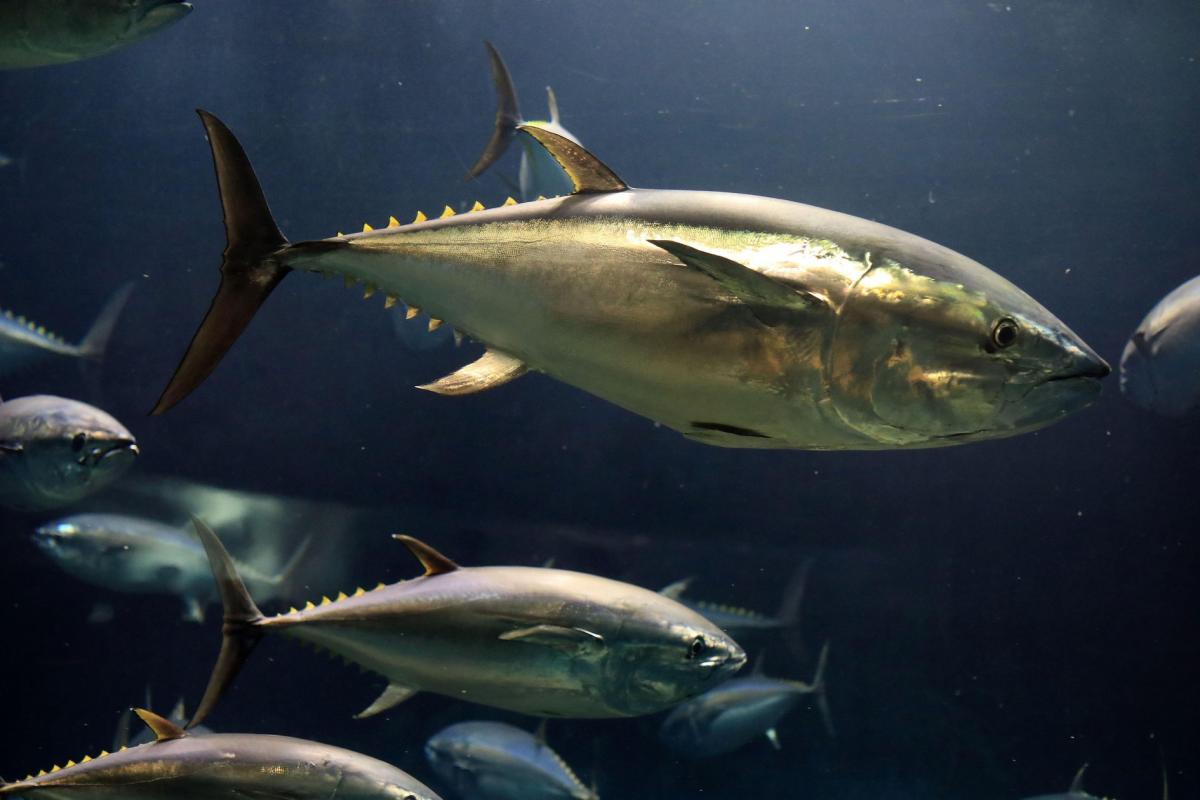
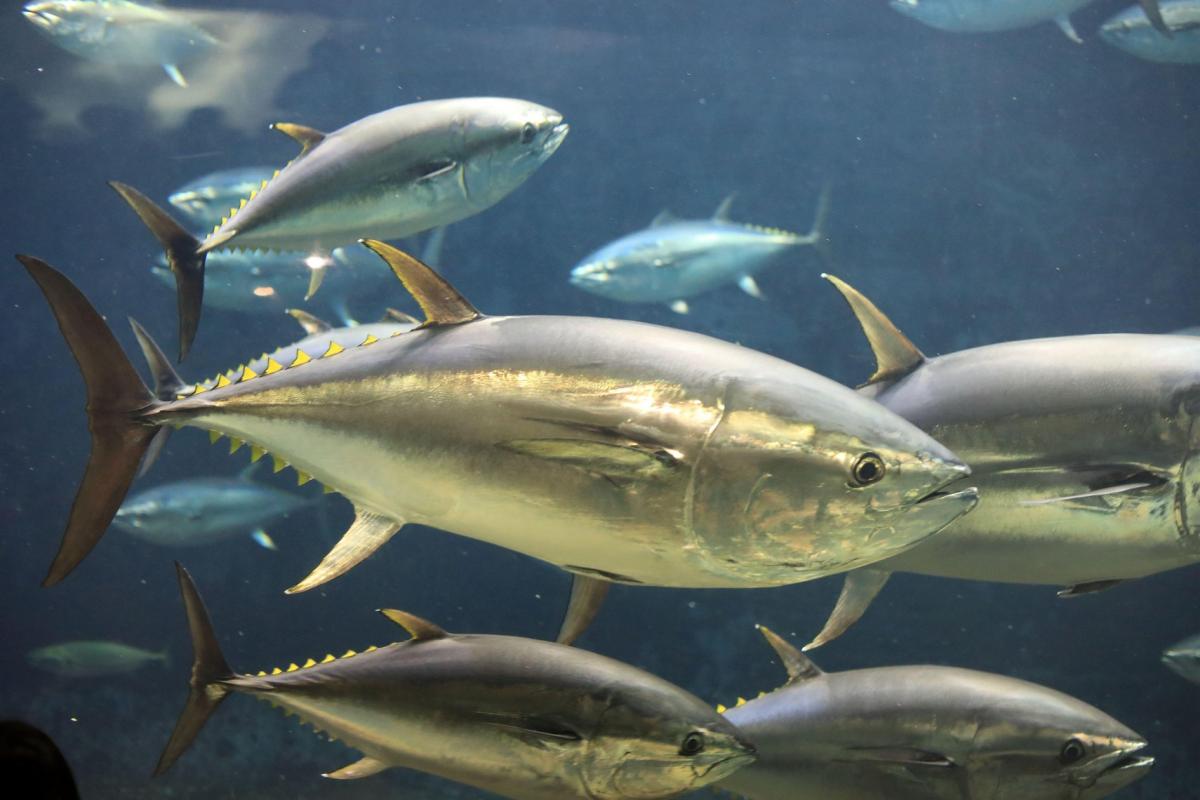
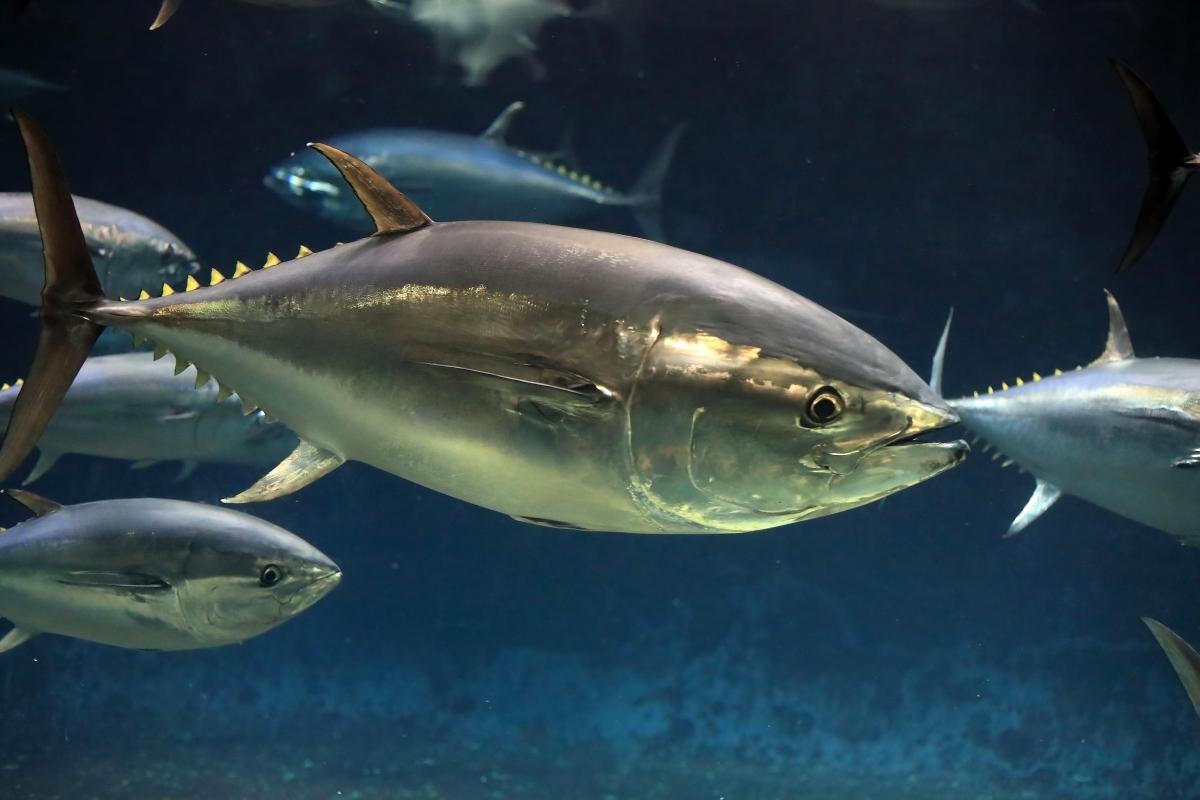
Sustainability
Pacific bluefin tuna are labelled as vulnerable on the IUCN Red List. Global population declines and the high commercial value of these fish means that bluefin tuna stocks need to be very carefully and strictly managed to ensure future sustainability.
The large migratory potential for bluefin tuna makes conservation and sustainability management difficult across the oceans. Illegal, unregulated and unreported (IUU) fishing and overfishing is leading to significant decline in this species’ stock numbers across the world.
In the Pacific, bluefin tuna species are managed by the Western and Central Pacific Fisheries Commission (WCPFC) and the Inter-American Tropical Tuna Commission (IATTC).
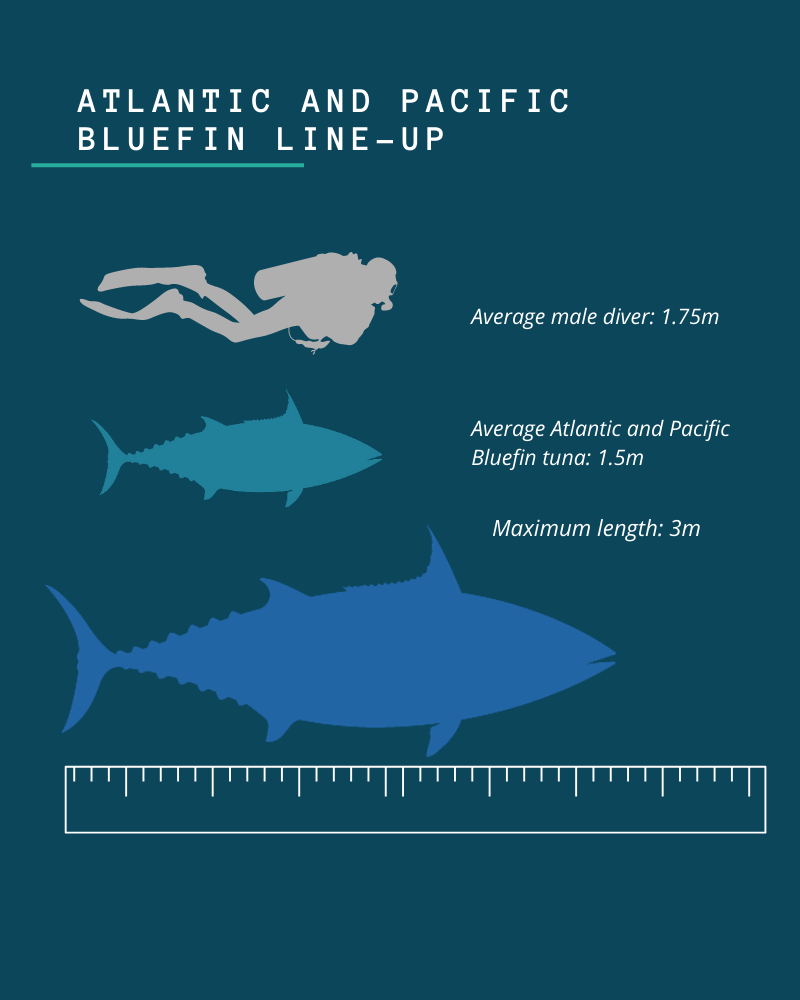
Dive Deeper...
Want to know more about Bluefin Tuna?
Download the reports to learn more about the environmental status of bluefin Tuna.
Seafood
Bluefin tuna is one of the most renowned pieces of seafood globally. Its dark red meat is packed with flavour, with the high-fat content giving it one of the most intense flavours of all of the tuna. The beauty of this meat makes it perfect for high-end sashimi lovers. Japan is the biggest consumer of bluefin tuna, followed by the United States and China. The demand with high-end sushi chefs is at such a level that the famous 'Tuna King', Kiyoshi Kimura, purchased a 278kg bluefin tuna for an eye-watering 333,600,000 yen (£2.5m) in Japan's famous New Year’s auction of 2019.
Typically, the robust flavour of bluefin meat can have a price tag ranging anywhere from $20 USD to $200 USD, per pound. Bluefin tuna can also be marinated with seasonings that enhance the natural richness of the fish and seared to lock those flavours in, however, it is recommended to eat the fish as either rare or medium-rare.
The marbling near the skin and the rich high-fat flavour makes the juicy cut perfect for sushi dishes or cooked rare. It makes for a firm and meaty cut, and it isn't often processed in cans, unlike other tuna species like skipjack and albacore.
As with the other species, bluefin tuna is an excellent source of lean protein, with a plethora of nutrients including niacin, vitamin B6 and B12, and phosphorus, whilst remaining low in fat and sodium.



